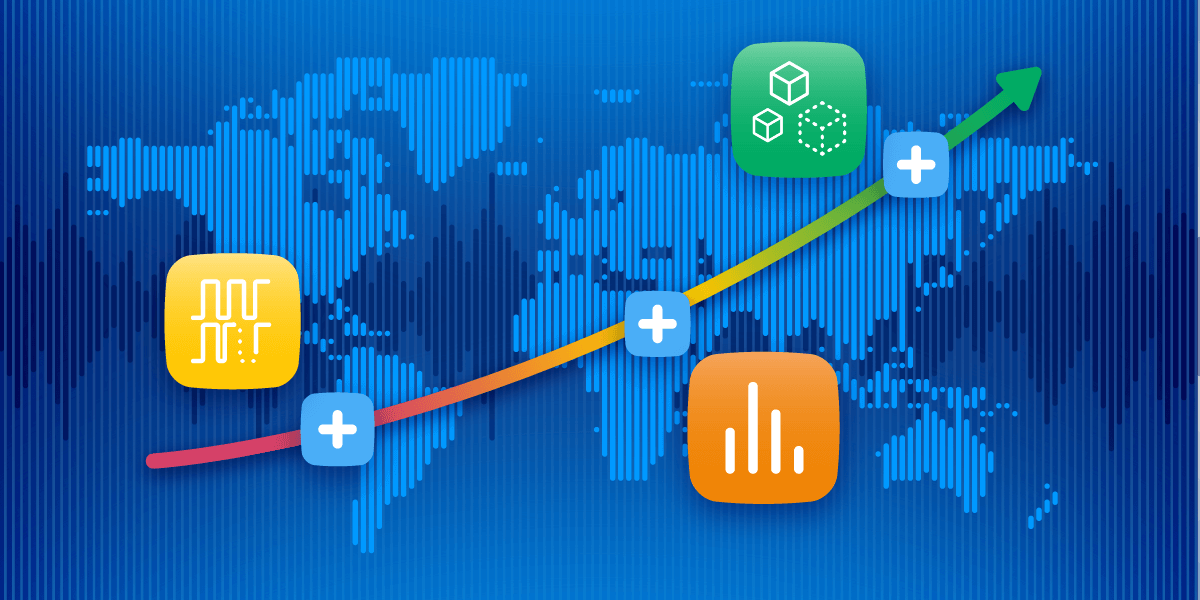Best Ways to Improve International Voice Call Quality

Global enterprises are under increasing pressure to exceed their customers’ expectations. Given that nearly two-thirds of customers are ready to end relationships due to poor service, reliable international call quality in your tech stack is crucial for fostering productive conversations.
Having a complex voice management system stands in the way of your customer experience goals. The use of data from multiple voice providers, coupled with rigid applications and inflexible or non-existent support, compromises your call quality and burdens your global voice operations.
Lead your international call quality improvement initiatives with these strategies for better governance and a superior calling experience. We’ll start by clarifying key terms and commonly used call quality metrics, examining the role of audio codecs in call quality, and detailing best practices to improve quality and sustain high performance.
Understanding Call Quality
Call Quality measures the audio performance of phone calls made to or from your business contact centers. It is evaluated using voice quality metrics such as Mean Opinion Score (MOS), jitter, packet loss, and latency, all aimed at ensuring a seamless and unified connection across your voice channels.
The Impact of Voice Quality of Service
Quality of Service (QoS) monitoring organizes and prioritizes voice traffic, mitigating data degradation in your contact center applications. It sets standards and rules for your network, determining the order in which data packets are sent and allocating the necessary internet bandwidth to ensure prompt and intact delivery.
Contact centers utilize several IP-based communication channels (e.g. email and video conferencing) which consume substantial internet bandwidth. When this bandwidth is overwhelmed, it negatively affects the clarity of your voice channel. This results in delayed call audio, leading to pauses or gaps in the conversation, or in severe cases, drop altogether.
What happens to international voice quality without QoS monitoring? Voice calls are sent in a First In, First Out (FIFO) sequence. This approach often results in major delays and congestion in your voice management audio streams.
Most Common Call Quality Metrics
Improving your business’s customer experience requires thorough traffic analysis to identify trends and anomalies. To optimize international voice services, global businesses should focus on tracking four key call quality metrics: MOS, jitter, packet loss, and latency.
1. Mean Opinion Score
Mean Opinion Score (MOS) represents a rating of the overall quality of your call audio and is a superset of metrics described below. It is calculated using packet-sniffing software that samples audio and assigns a rating between one and five for each voice packet tested, where one indicates the poorest quality and five the best.
MOS Benchmarks
For international voice services, a MOS of 4.3 or higher is considered the benchmark for a high-quality call. It allows for clear conversations with no extraneous noise or interruptions. Calls scored below 3.5 indicate low voice quality.
2. Jitter
Jitter refers to the variation in the time it takes for data packets to reach their destination, arriving either faster or slower than expected. Although an endpoint buffer can alleviate minor jitter, excessive amounts can lead to conversation gaps and audio that sounds robotic, ultimately diminishing the customer experience.
Jitter Benchmarks
Some jitter is inevitable due to networks continually prioritizing different types of data transmission and varying user counts. A practical benchmark for jitter is no more than 50 milliseconds.
3. Packet Loss
Packet loss occurs when one or more voice data packets, traveling between two endpoints, fail to reach their destination. This typically happens due to insufficient internet bandwidth to support the audio transmission.
QoS standards can help reduce packet loss by giving higher priority to audio packets over others, like web browsing. In situations of extremely limited bandwidth, packet loss can still occur despite proper QoS management.
To minimize packet loss, it is crucial to prioritize cloud voice traffic and phones. This ensures that everyone in your call center uses high-quality network equipment, avoids personal or shadow IT activities and that your IT team actively monitors for network bottlenecks. Furthermore, encouraging the use of dedicated ethernet lines for cloud voice calls can be highly beneficial.
Packet Loss Benchmarks
A packet loss rate of 1% is generally acceptable for maintaining high-quality conversations. Rates above this threshold lead to noticeable delays and dropped calls.
4. Latency
Latency is the delay in audio transmission during a call, often resulting from network congestion and the physical distances the call travels. For instance, calls to another continent typically experience greater audio latency compared to those made to neighboring countries. Factors like outdated equipment can also contribute.
To reduce latency, upgrading your team’s hardware and software, as well as implementing QoS standards, are effective strategies. Additionally, optimizing your audio routing through a select few strategic data centers along the shortest possible path can further enhance call quality.
Latency Benchmarks
For international voice calls, a latency of up to 150 milliseconds is deemed acceptable, ensuring seamless conversations. Exceeding this level can result in frustrating communication delays and potential disruptions in call quality.
Audio Codecs to Improve QoS and Call Quality
Codecs define the level of data compression used when transmitting call audio over the cloud. They are chosen based on factors like your available bandwidth, the desired call quality for international voice service, and the specifications of your network equipment.
The term ‘codec’ stems from their function: they COmpress analog audio into digital voice packets for transmission over the internet and subsequently DECompress it back into audible sound. Another way to think about them is that codecs “code sounds” at a specific rate to balance quality with transmission speed.
There are two primary codecs used in international contact center voice services:
- G.711: This codec, often the primary choice for SIP Trunking calls and PSTN, uses a high bit rate of 64 kbps, providing excellent call quality for global voice communications.
- G.729: Operating on a narrow band of the audio frequency spectrum and transmitting at 8 kbps, this codec is suitable for large volumes of basic voice calls but is not ideal for high-quality audio transmissions.
Understanding the appropriate codec for your international voice activities is key to ensuring a superior customer experience and streamlining your voice management system. Partnering with a global voice provider skilled in codec processes, data analysis, and software integration can help you achieve your call quality goals.
Best Practices for Improving Call Quality
If you are experiencing a lower MOS or issues with jitter, packet loss, and latency in your audio, implementing best practices can help you achieve stronger benchmarks or prevent them to begin with. To enhance the quality of your international voice calls, consider the following steps:
1. Align with Your Voice Providers
Global enterprises and contact centers should align their network and configuration to that of their voice provider. This can be done in two main ways:
- Codec Selection
Engage with your voice provider to understand the codecs they offer and determine which ones can deliver a high-quality voice experience. Using their recommended codec can lead to clearer calls and more reliable communication for your customers. If not, you will need to convert audio in the network. If audio conversion is necessary, aim to do it once and at a centralized point in your network. Multiple conversions can lead to increased noise and more gaps in conversation. - Optimizing Call Routing
Be aware of the path your phone calls take. If you are not careful, calls may travel around the world multiple times, which is highly inefficient. Understanding where your provider routes these calls is crucial. Choose data center locations that are closest to the call’s destination. Working with a truly global provider, like AVOXI, which has points of presence (PoPs) worldwide across every major continent, can significantly reduce the travel distance of your calls and improve latency benchmarks.
2. Monitor Network Basics
To ensure smooth and clear call quality, it’s essential to regularly oversee your network’s performance. This includes:
- Regularly monitoring your traffic trends and call quality performance using a reliable packet analyzer tool. This helps in identifying and addressing issues proactively.
- Prioritizing voice traffic over other types of data packets, such as images and music, which are less critical to customer experience.
- Conducting frequent tests of your Local Area Network (LAN) and Wide Area Network (WAN) connections to ensure that voice traffic is transmitted smoothly and without interruptions.
3. Partner with an Established International Voice Provider
An experienced international voice provider does more than just recommend codecs; they actively monitor, troubleshoot, and resolve call quality issues on your behalf. With numerous responsibilities to manage, dedicating time to track down vendor-specific contacts for call quality issues - which can take weeks to resolve - is not practical. Partnering with a provider that integrates software solutions allows you to gain better visibility into your phone number performance and access detailed call reports directly within your CCaaS or UCaaS platforms, streamlining your operations.
4. Consider a Proof of Concept (PoC) with a New Voice Provider
As part of enhancing your international call quality, it is beneficial to consider a PoC approach, especially when exploring partnerships with new voice providers. This step involves:
- Selecting a Small Sample of Numbers for Testing: Begin by selecting a small set of numbers that will be used for testing the new provider’s capabilities. This limited scope allows for focused and manageable evaluation.
- Assessing Traffic Quality: Monitor the quality of traffic through these numbers. Key metrics to observe include jitter, packet loss, MOS and latency.
- Evaluating Provider Performance: Analyze how the new provider handles traffic, paying special attention to how they manage challenges unique to your network and user needs.
- Making Data-Driven Decisions: Use the insights gained from the PoC to make an informed decision about the provider’s effectiveness in your specific environment.
Incorporating a PoC phase can be a pivotal step in ensuring that your chosen voice provider aligns with your operational needs and quality standards, ultimately contributing to better call quality and customer satisfaction.
Stay Ahead of International Voice Call Quality Through Robust Analytics
Enhancing your visibility into call quality is a crucial step in improving both your international voice quality and customer experience. Partnering with a global voice provider that offers scalable solutions, in-depth knowledge of codecs and routes, and a comprehensive set of performance analytics is essential to maintain superior international call quality.
AVOXI distinguishes itself as a leading provider of premium international voice services for global businesses and contact centers. With extensive coverage in 150+ countries across 7 number types, AVOXI delivers reliable call quality, expertise in routing and SIP integrations, and provides comprehensive phone number performance analytics. This makes managing global voice communications straightforward. Whether you use our all-in-one platform or integrate with your existing ecosystem, streamlining and elevating your international voice services to new heights of quality and efficiency is effortless with AVOXI.

On-Demand Webinar
International Voice Without Compromise
Winning the call quality battle through analytics and optimized service resolution.


